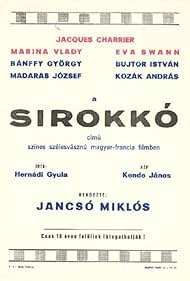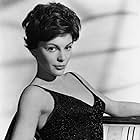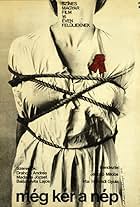Aggiungi una trama nella tua linguaThe preparation, in Hungary, of the assassination in Marseilles of King Alexander of Yugoslavia in 1934.The preparation, in Hungary, of the assassination in Marseilles of King Alexander of Yugoslavia in 1934.The preparation, in Hungary, of the assassination in Marseilles of King Alexander of Yugoslavia in 1934.
Foto
Trama
Recensione in evidenza
Winter Wind opens in a snow-bound forest, concentrating on a small band of seemingly hero-worshiping rogues. Over the next few minutes, the camera moves through the forest onto a nearby road, waits while a horse and carriage approach, occasionally tracks off to have a close-up look at the activity of some otherwise hidden characters, circles the carriage as it is shot to pieces by the gang, and follows one of them as he escapes into the forest and runs onto a wasteland of snow and ice.
I'm not sure what has happened, why and exactly how, but it doesn't really matter. The appreciation for this film exists on another level, namely to look in wonder at the masterful tracking shots which create an unparalleled dynamic between character, camera and audience.
Of considerable interest also are the on- and off-screen sound effects, the movement of characters in and out of frame, and the atmosphere of intrigue and paranoia Jancso creates as we are never made explicitly aware of the political situation nor given any sense of recent history and backstory.
I can't say much about the plot: a man, some kind of heroic General made untouchable for his value as a symbol to people we never get to see, is held for his own protection in a small cottage somewhere in the wilderness. But, he wants to actively fight and becomes suspicious of those who want, and practically force, him to stay. The audience is led to empathise with his solitary state by the frustrating and disturbing lack of the formal properties of a regular plot: exposition, motivation, characterisation. Or, rather, it all exists momentarily because from one incident to the next everything in the plot contradicts what we already know. Just as the General can't trust anything neither can we.
So, watching Winter Wind for its story is likely to make anyone a temporary loon.
For those who appreciate camera movements that can, for instance, do this: begin in the cottage, wander around from room to room following several characters framed from long shots to close-ups, steadily and smoothly make its way outside (down the steps) and then perform a few laps of the cottage, stopping briefly to look into a window, before winding down the hill a bit to another group of characters and finally watch them ride off into the forest, there is a lot on offer. I never saw track marks in the snow, the central action was always in sharp focus, an actor hardly ever had to be slightly re-framed. It's an incredible treat and a sign of immense labour (I've heard each shot was rehearsed for a week before actual shooting).
Obviously a good film for cinematography students to analyse. More probably needs to be said about colour, set design, and the minimal use of sound but I'll leave that to another reviewer. It's hard to find but Winter Wind is just as impressive as the other Jancso film I've seen (The Red and the White) and well worth finding if you like your films unique (or at the very least, original). For camera buffs and devotees of Jancso, it's probably indispensable.
I'm not sure what has happened, why and exactly how, but it doesn't really matter. The appreciation for this film exists on another level, namely to look in wonder at the masterful tracking shots which create an unparalleled dynamic between character, camera and audience.
Of considerable interest also are the on- and off-screen sound effects, the movement of characters in and out of frame, and the atmosphere of intrigue and paranoia Jancso creates as we are never made explicitly aware of the political situation nor given any sense of recent history and backstory.
I can't say much about the plot: a man, some kind of heroic General made untouchable for his value as a symbol to people we never get to see, is held for his own protection in a small cottage somewhere in the wilderness. But, he wants to actively fight and becomes suspicious of those who want, and practically force, him to stay. The audience is led to empathise with his solitary state by the frustrating and disturbing lack of the formal properties of a regular plot: exposition, motivation, characterisation. Or, rather, it all exists momentarily because from one incident to the next everything in the plot contradicts what we already know. Just as the General can't trust anything neither can we.
So, watching Winter Wind for its story is likely to make anyone a temporary loon.
For those who appreciate camera movements that can, for instance, do this: begin in the cottage, wander around from room to room following several characters framed from long shots to close-ups, steadily and smoothly make its way outside (down the steps) and then perform a few laps of the cottage, stopping briefly to look into a window, before winding down the hill a bit to another group of characters and finally watch them ride off into the forest, there is a lot on offer. I never saw track marks in the snow, the central action was always in sharp focus, an actor hardly ever had to be slightly re-framed. It's an incredible treat and a sign of immense labour (I've heard each shot was rehearsed for a week before actual shooting).
Obviously a good film for cinematography students to analyse. More probably needs to be said about colour, set design, and the minimal use of sound but I'll leave that to another reviewer. It's hard to find but Winter Wind is just as impressive as the other Jancso film I've seen (The Red and the White) and well worth finding if you like your films unique (or at the very least, original). For camera buffs and devotees of Jancso, it's probably indispensable.
- James Brown
- 9 gen 2000
- Permalink
I più visti
Accedi per valutare e creare un elenco di titoli salvati per ottenere consigli personalizzati
Dettagli
- Tempo di esecuzione1 ora 20 minuti
- Mix di suoni
- Proporzioni
- 2.35 : 1
Contribuisci a questa pagina
Suggerisci una modifica o aggiungi i contenuti mancanti

Divario superiore
By what name was Scirocco d'inverno (1969) officially released in Canada in English?
Rispondi



















